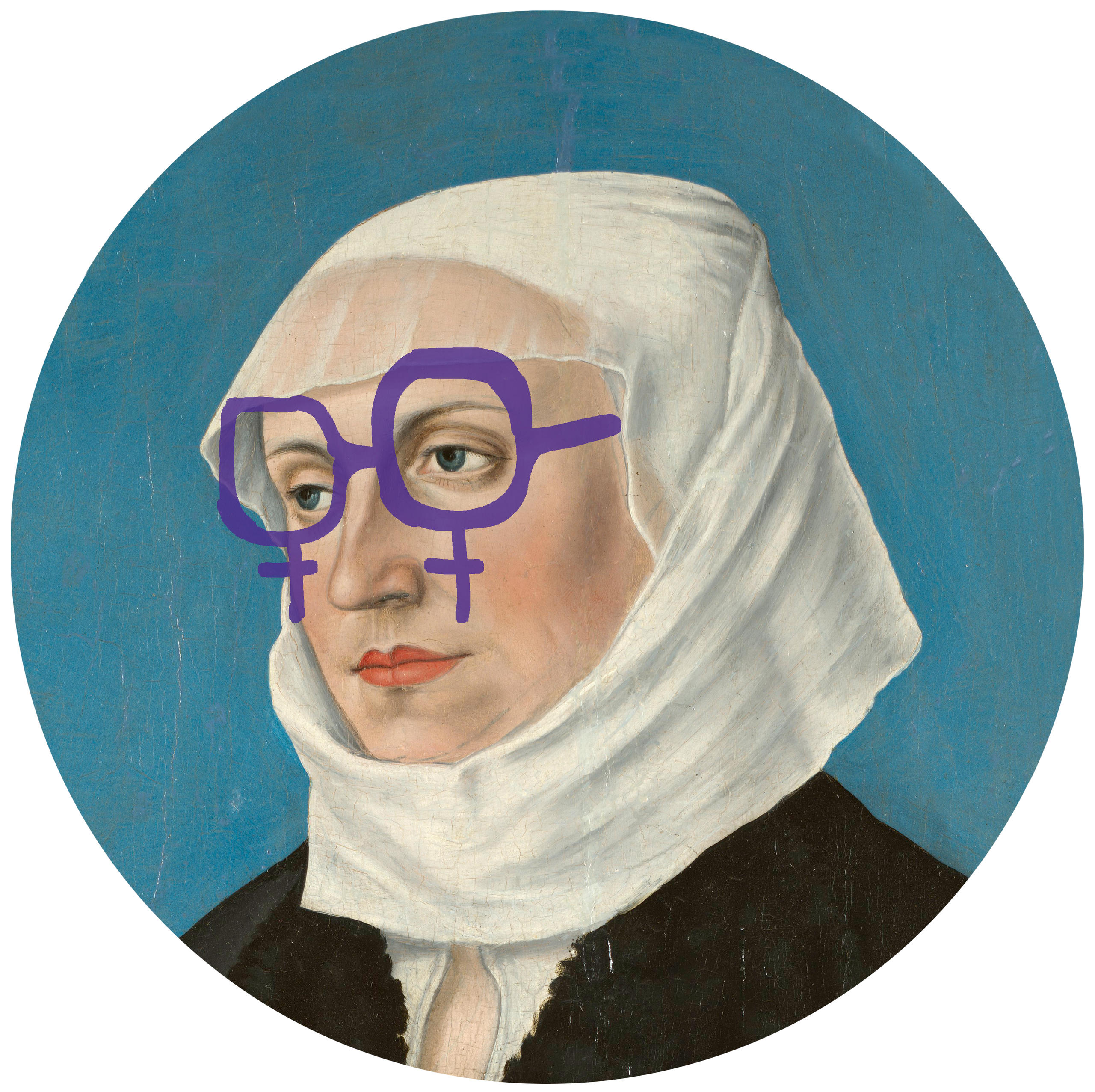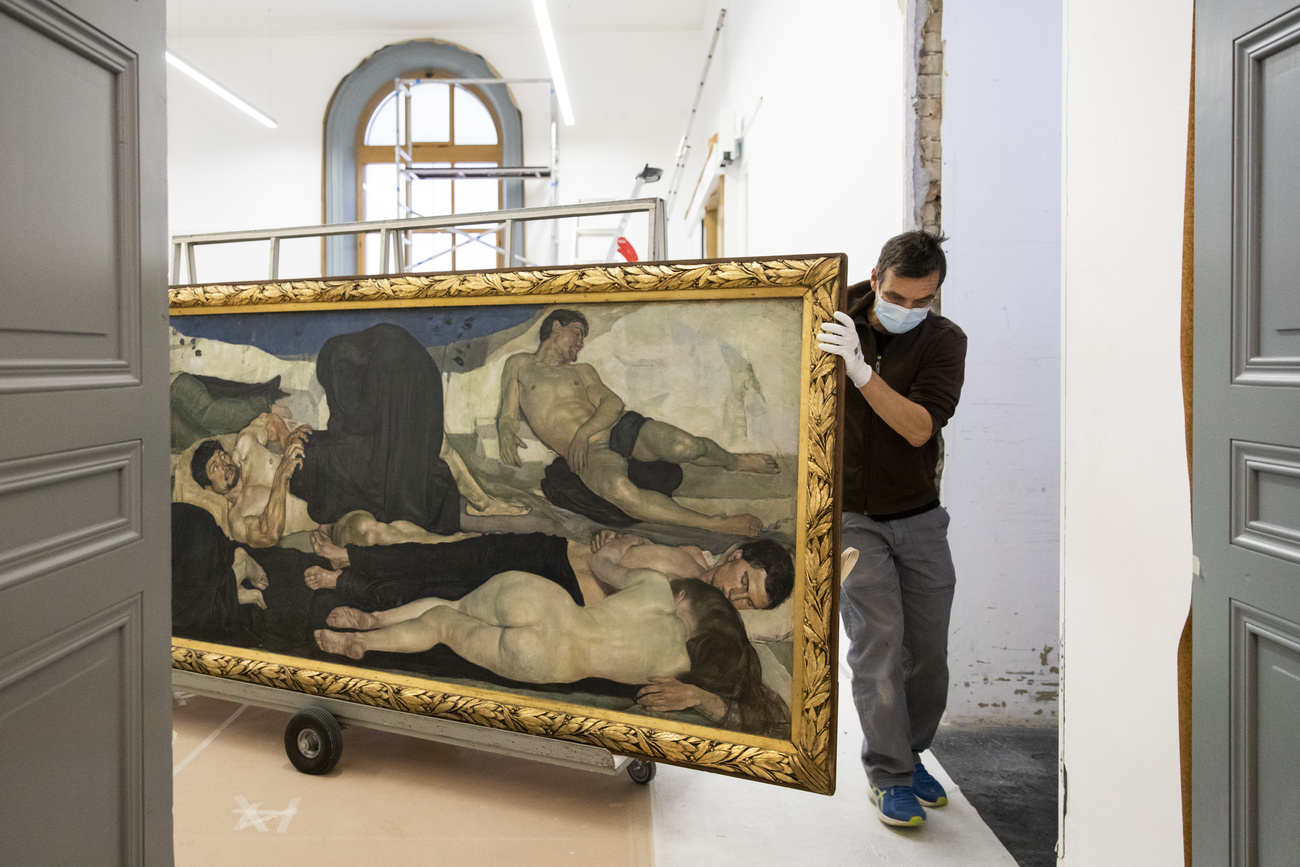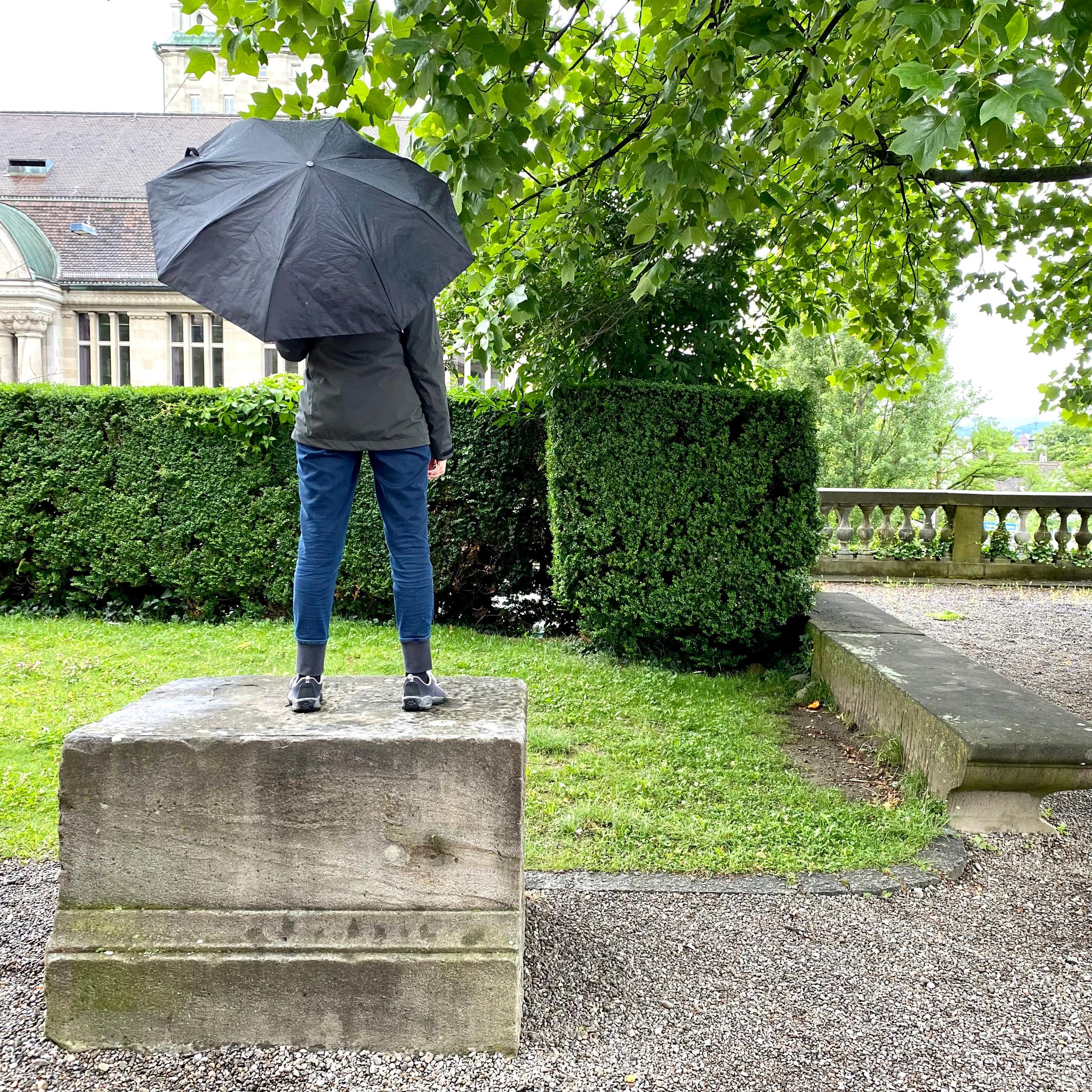
‘Do women have to be naked to be shown in Zurich’s public space?’

For over a year, Hulda Zwingli, a collective of Swiss women in the art world, has been tackling the under-representation of women artists in the local press, museums, and especially in Zurich’s public space. SWI swissinfo.ch met some of the artists that make up the different personalities of this fictional persona to discuss the challenges and the motivation behind their fight.
In Swiss museums, as in other countries, women artists are still struggling to reach equal visibility of their male counterpart. The first statistics on the sector’s situation was published in 2019, as a result of a joint effort between SWI swissinfo.ch and Swiss public broadcaster RTS. A more in-depth study has since been commissioned by the Swiss Arts Council, Pro Helvetia, and was carried out by the Centre for Gender Studies at the University of Basel.
PLACEHOLDERThis preliminary study concluded that “the manifest under-representation of and lack of visibility for women in the cultural sector means that Switzerland loses a significant potential in skills and abilities in both artistic and management areas.” The researchers urged for more in-depth surveys on gender relations in the Swiss cultural sector, as targeted measures can only be implemented once the knowledge gaps will be filled.
- 80 out of the 125 art museums that were contacted for the 2019 poll sent us their data for the 2008-2018 period;
- only 26% of solo exhibitions were dedicated to women artists;
- in group exhibitions the percentage of women was 31%;
- in the 7 most visited museums the percentage of women ranged from 25% to 6%;
- only 8 out of 80 museums had 50% or more women solo exhibitions in their programmes.
In the meantime, several voices are advocating for an equal representation of women artists in the Swiss art scene. One of them is Hulda Zwingli, a collective of Swiss women in the art world, who decided to make their questions and denunciations heard through an Instagram profile with the same name. Hulda Zwingli is composed of a dozen people in the art world who wish to remain anonymous. SWI swissinfo.ch talked to several members of the group.

SWI swissinfo.ch: How and when was Hulda Zwingli born?
Hulda Zwingli: Swissinfo gave us the base for being proactive, because what we knew deep down for years had finally been proven in numbers. Then, during the women’s strike of 2019 we decided to walk around Zurich and have a look at art in the public space. We made cardboard signs and documented our action by taking pictures. One year later we decided to open an Instagram accountExternal link to reach a wider public.

More
Women remain largely under-represented in Swiss museums
SWI: What’s the meaning behind the name you made up?
H.Z.: Hulda was the name of a Swiss art collector Hulda Zumsteg, and Zwingli is the reformer of Zurich. Hulda mimics the old conservative mentality of Zurich with a feminist twist. We wanted to show that we are from Zurich, we are a potential public, we are criticising the actions of publicly funded institutions as one of them, not as a distant activist group. If the criticism comes from too far away, it’s easily dismissed.
SWI: After two nationwide women’s strikes and a new parliament with a record number of women, why is anonymity still necessary in 2021 when advancing women’s causes?
H.Z.: The art scene is an unexpectedly conservative and small scene, and there are many dependencies, many people have several jobs in different areas to survive. That’s why nobody is really able to speak out, and that’s why the Guerrilla girls, an American equivalent launched in the 80s, were anonymous too. There are many people in the art world that are sitting in juries, sitting on museum boards or sitting in the administration. And they have to accept the conditions as they are in order to survive. Fighting openly is really difficult in that system. That’s our experience: you have more power with an anonymous account because people don’t really know who is behind it.
SWI: Our research focused on the visibility of women artists in museums, but one of your specific targets is art in public space. Why?
H.Z.: You can decide whether to visit a museum or not, but in the public space you have to watch all of it, you can’t choose. You see it, and when you check it’s mostly works made by men.
SWI: In 2020 the Baltimore Museum of Art only acquired artworks made by women, and they even sold some artwork made by men to increase their budget. What do you think of this action, could it be replicated in Swiss museums?
H.Z.: It’s a very radical but bold move, which would also make sense in Switzerland. I could imagine that if a museum has three similar Picassos, they could sell one. That would be a judgement to be made by art historians that are familiar with the topic. As Hulda we cannot decide. We are criticising the current acquisition practices and the exhibitions’ schedules. What they’re doing with their collections, that’s really a wider political discussion.
SWI: Isn’t the binarity between man and woman a bit outdated in 2021, when there’s so much debate going on about different gender identities?
H.Z.: There is no data regarding the non-binary situation. Pro Helvetia is only now, in 2021, debating whether they can ask people what gender they belong to. That’s very new. And if you have 75 or 95% white men – depending on where you are looking -, you have an imbalance that you can address. Hulda respects the whole diversity debate, but she has to argue on a base that’s countable. Currently she’s mostly criticising the majority of 85% white men from a feminist point of view.
SWI: What do you think about all-female museums like the Muzeum Susch, or an all-female programme like the one the Musée des Beaux-arts in Le Locle had in 2019?
H.Z.: This was a big discussion in the past, from the 70s, Hulda concluded that for a certain period, there probably should be some privileges for women and under-represented groups, just to improve the system, perhaps for a limited time. After which we’ll maybe have solved the problem and these discussions won’t be necessary anymore. Projects like the FATart FairExternal link [a Swiss art fair exclusively dedicated to women, lesbians, inter-, non-binary and trans artists] are very important.

SWI: More generally, has the situation in Switzerland changed over the past years? Are there any differences in how the topic is dealt with between the language regions?
H.Z.: We’ve seen that the situation in the Kunstmuseum Basel changed a lot, in Bern as well. Many museums are really making efforts. Not so much the Kunsthaus Zurich, though, where most of the money goes. But there are also areas where Hulda has no idea of what’s happening, for example how much of the fee from large scale development projects is invested in women artists, or their representation in art collections. Collections of universities are extremely imbalanced as well. In Ticino the situation doesn’t seem to have improved that much, but it’s difficult to say without really having solid data.
SWI: What should be done to increase women artists’ visibility?
H.Z.: I could imagine changing the artworks in public space, rotating them. Buying more works by women, and they should also have temporary exhibitions, which at the moment mainly consist of 75% male artists. There should also be transparency concerning the institutions’ sponsoring and the jobs that people have beside their contracts in the museums and institutions. If those were transparent, it would change a lot. Maybe also introducing fixed-term contracts, and for sure change the existing quotas in the institutions. I think there must be conditions for public money allocation: lots of public money is going into the arts without conditions. And if you have no conditions, the beneficiaries of public funds can follow the market or go for the most profitable solution.
SWI: One year after the launch of your Instagram account, what are your impressions? Are you happy with the results of your actions?
H.Z.: Oh yes, we’re overwhelmed because there is lots of interaction, lots of publicity with our Instagram profile. It’s like a debate or a salon. We were asked to exhibit the material we’ve been collecting through our account for three exhibitions, two in Zurich and one will be in Schaffhausen. We were mentioned in Zurich’s cultural agenda “Züritipp”, interviewed for the “Radical art review” and the “Ensuite” art magazine, and we were asked to participate in an international documentary. Lots of people are sending us inputs. But we can’t measure the results. The discussion is very active but the system very slow.
SWI: Ann Demeester has recently been appointed as director of the Kunsthaus Zurich. How do you feel about this female nomination?
H.Z.: Hulda is optimistic. Ann Demeester made some exhibitions to bring awareness on the equality topic. She also seems to have innovative ideas and passion. We can’t predict if she’ll be able to keep some independence in the system of a big semi-private museum which is full of financial dependencies. Also, the contracts that are made with big male-dominated private collections have a 20-year duration and are not public. It’s therefore not very easy to know how free she will be in balancing the system. The Kunsthaus’s own collection contains about 5% of works by women*. It will be a real challenge to change this.

In compliance with the JTI standards
More: SWI swissinfo.ch certified by the Journalism Trust Initiative





























Join the conversation!